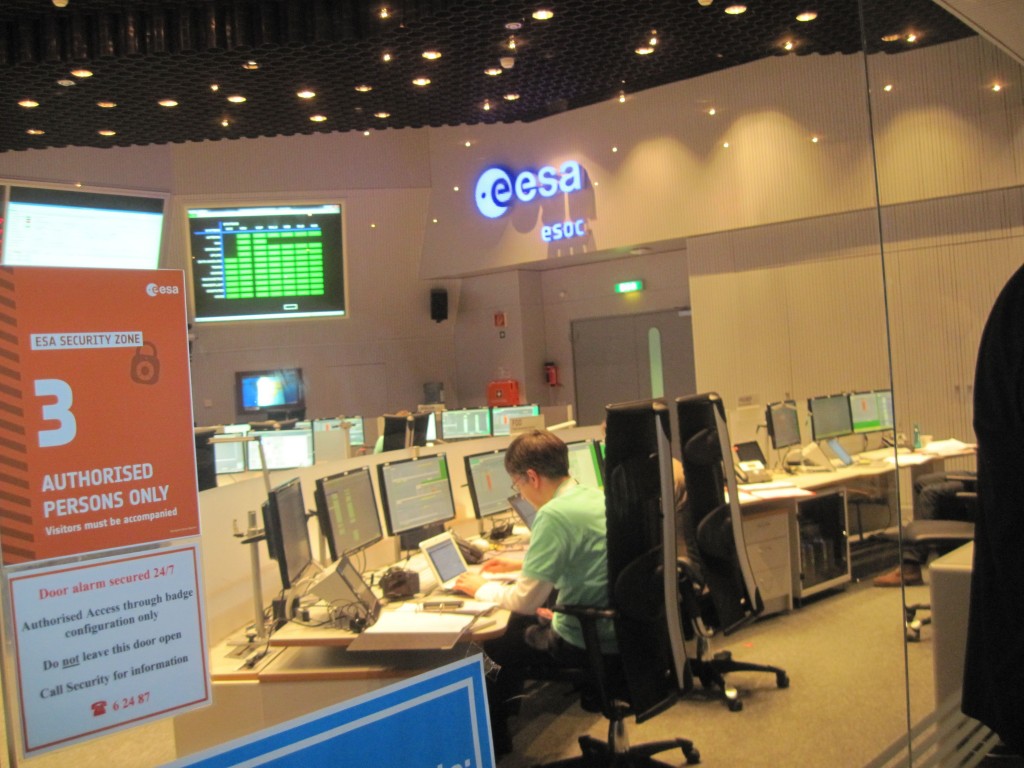Last week, we talked on the Facebook-Dependance of Virtual Astrobiology Society about the phantastic ExoMars 2016-Launch.
So David, Admin of Virtual Astrobiology Society, asked me, if I would like to write a personal article about it.
So, here it is!
Monday,14.10.2016 , 09:31, Pad 39 at Site 200 in Baikonur Cosmodrome,
Kazakhstan. The mighty Proton-M rocket with a Briz-M upper stage brought ExoMars 2016 on its way to Mars. Russian rockets start without a countdown, they just launch.
Lift off of Proton M with ExoMars 2016: Michael Khan (Mission Analyst) explainen launch and orbital mechanics (He calculated the flight trajectory!):
Here Michael wrote much more about the mighty Proton and ExoMars-launch.
10:31: Darmstadt. A not-so-large-City-in-Southern-Hessia in the Rhine Valley.
It is the home of ESOC – European Space Operations Centre.
So, Darmstadt is a little town, but it is the european space capital.
All unmanned flight operations of ESOC for whole Europe are planned, conducted and controlled from here. At this sunny day in march with ExoMars a new era of martian exploration starts.
Everybody, in the press rooms, control rooms and most offices, is watching the live TV coverage. Even via broadcast I can feel the deep roar of the starting Proton in my abdominal membrane. Then the rocket fades in the sky.
It´s gone.
I could hear, how people around me exhale, eased.
ExoMars 2016 is a very heavy space craft, it consists of TGM – Trace Gas Orbiter – and Schiaparelli-lander. So the Proton-upper stage has to orbit earth three times, every time with more speed in a larger orbit. Only this way it can reach the high velocity which is needed for its long way to the red planet, explains Mike McKay to me. He knows this – he is Mars Express Flight Director. And 500 million km are a long way.
ExoMars 2016 weighs 4332 kg: Trace Gas orbiter is about 3732 kg with 112 kg scientific payload, plus 600 kg for Schiaparelli with its heavy shield for the hot ride trough martian atmosphere.
It will take up to at least 21:13 h until ExoMars 2016 is separated from the upper stage. More than 10 hours!
So the day is filled with a program of presentations.
Martians are ….green!
My first “program”-point at this day was, to find my husband, Rainer Kresken. He is a an enthusiastic space engineer for astronomical research satellites, a dedicated amateur-astronomer and he can explain space-stuff for everybody. So at this day, he commented for the TV- and broadcasting-companies. His first interview was at 07:00 h in the morning, afterwards he commented for the Hessian TV-channel HR. He asked me, to bring him something. But: Where to find him? So I asked communication officer Andreas Schepers for help, he led me through the “staff-only-area” to main ExoMars control room. I was greeted at first by Paolo Ferri with a smile and warm handshake – he is head of Mission Operations for Rosetta. When he smiles, we have good start conditions. Rainer also smiled at me and then I went back to the main press area – into a mood like in a beehive. Media-teams and journalists from Europe and the USA, (the Russians have been there last week).
At these launch events I do not love only the program, but also the people: colleagues from all media, ESOC-staff and several “space-VIPs” – of course the former ESOC-director and ESA-astronaut Thomas Reiter could not resist to share this great event. Many of these people have to tell interesting stories. So I had a fascinating dialogue with Diego Urbina, a Marsonaut. He was one of two ESA crew-members of Mars500 and we talked about his experiences and goals. The short summary is: The team was great, food was a challenge and – of course – he would like to fly to Mars in real life. With a return ticket.
A special guided tour for press and social media gave us a look to ExoMars 2016 main control room: Shielded by large windows, the ExoMars 2016-staff was working. In the vestibule was a buffet with brain-food: Fruit, Snacks and a large box of dutch stroopwafels – with this support the mission must become successful!
Irritating were the presence of so many green shirts. Green? Normally ESA produces mission-shirts in white or three shades of blue, “MarsExpress” was red (!) and, o. k. Rosetta was turquoise. But green? This is a mission to the RED planet!
Nobody could explain me. The positive aspect: Mint and grass green shirts are flashy.
Behind ExoMars
Back to the large media-room I listened to “Behind ExoMars” – several presentations about the orbital mechanics and the background of ExoMars, the orbiter and lander, its landing technology, its instruments and the focus of the different parts.
ExoMars contains of two steps: ExoMars 2016 and, two years later, ExoMars 2018.
ExoMars 2016 is constructed of two components: the Trace Gas Orbiter (TGO) and the lander Schiaparelli. TGO shall sniff for trace gases like methane and works also as communication- and relais-Module, even for ExoMars 2018. For the research of trace gases ExoMars 2016 has 4 scientific instruments: ACS (Atmospheric Chemistry Suit), CaSSIS (Color and Stereo Surface Imaging System), FREND (Fine Resolution Epithermal Neutron Detector) und NOMAD (Nadir and Occultation for Mars Discovery).


Letzte Kommentare